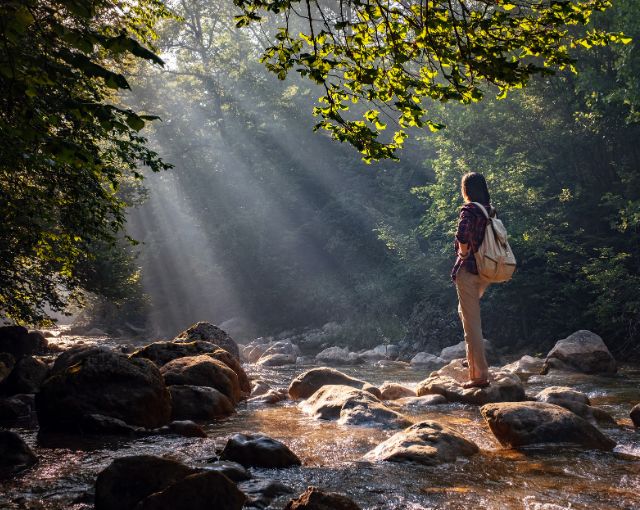
6/18/2024
Voyage? Let’s Go! But Slow!
People all over the world love travelling. In addition to their desire for recreation and experience, many consider the authenticity, and environmental and social impact of their travels. There is a growing trend of Slow Travel.
Those Who Go Slow
You can mostly tell a tourist in the crowd – they run from one celebrated attraction to another, usually just having a quick glance from the most accessible angle. They rarely bother to go inside and never digress to marvellous places just a few metres away – it would delay them. They take countless pictures and immediately post them on social media. If you ask them about their holidays after they return, they will say it was exhausting and they will not be able to recognise half of the destinations in their photos, let alone say something interesting about them.
But there is another (growing) group of travellers who want their holidays just the other way. They seek respite, peace, they want to learn about local traditions and see the way of life in the countries they visit. Without even knowing, they advocate the style called Slow Travel.
The Slow Travel (or Slow Tourism) phenomenon is not new at all. It has been gaining ground since at least 1999, when the Slow Food movement in Italy gave rise to Cittaslow. The movement tries to motivate tourists as well as local residents to behave more responsibly. Today, there are some three hundred member towns worldwide.
⛰️ Example Is the Best Sermon
The number of people who care about responsible travelling keeps growing. “We expect Slow Travel to thrive because an increasing number of people seek deeper and more authentic experience. The growing climate awareness and sustainability efforts support the trend,” says Pavel Pichler. Local communities and DMCs in Czechia can seize the opportunity and address new interesting target groups through Slow Travel. The Eastern Bohemian DMC “Orlické hory a Podorlicko” (The Eagle Mountains and its Foothills) was the first to adopt the principles of Slow Tourism in the Czech Republic. They focused on the advantages of the region – stunning nature, sparse network of transport (outside towns), genius loci or the spiritual dimension of the places. Their communication focused on cycling paths, footpaths and hiking trails.
Slow Travel
Orlické hory a Podorlicko is not the only region with a strong potential for Slow Travel development. Pavel Pichler says that the same is true of selected lesser-known parts of the Giant Mountains (Krkonoše), White Carpathians (Bílé Karpaty) or Moravian Wallachia. Maybe you could name a similar place where you can get away from everyday stress, merge with nature, relax and ease your mind…
TEXT: Petr Manuel Ulrych
PHOTO: Shutterstock.com
The whole article is to be found in the summer issue of the Leo Express magazine
Share article
0 x
Copy URL
Log into the loyalty program Smile Club
Don't have an account yet?
By logging in I agree with conditions of the loyalty program, processing of personal data and declare that I have reached the age of 16. Cancellation of tickets is only possible to leo credits.


